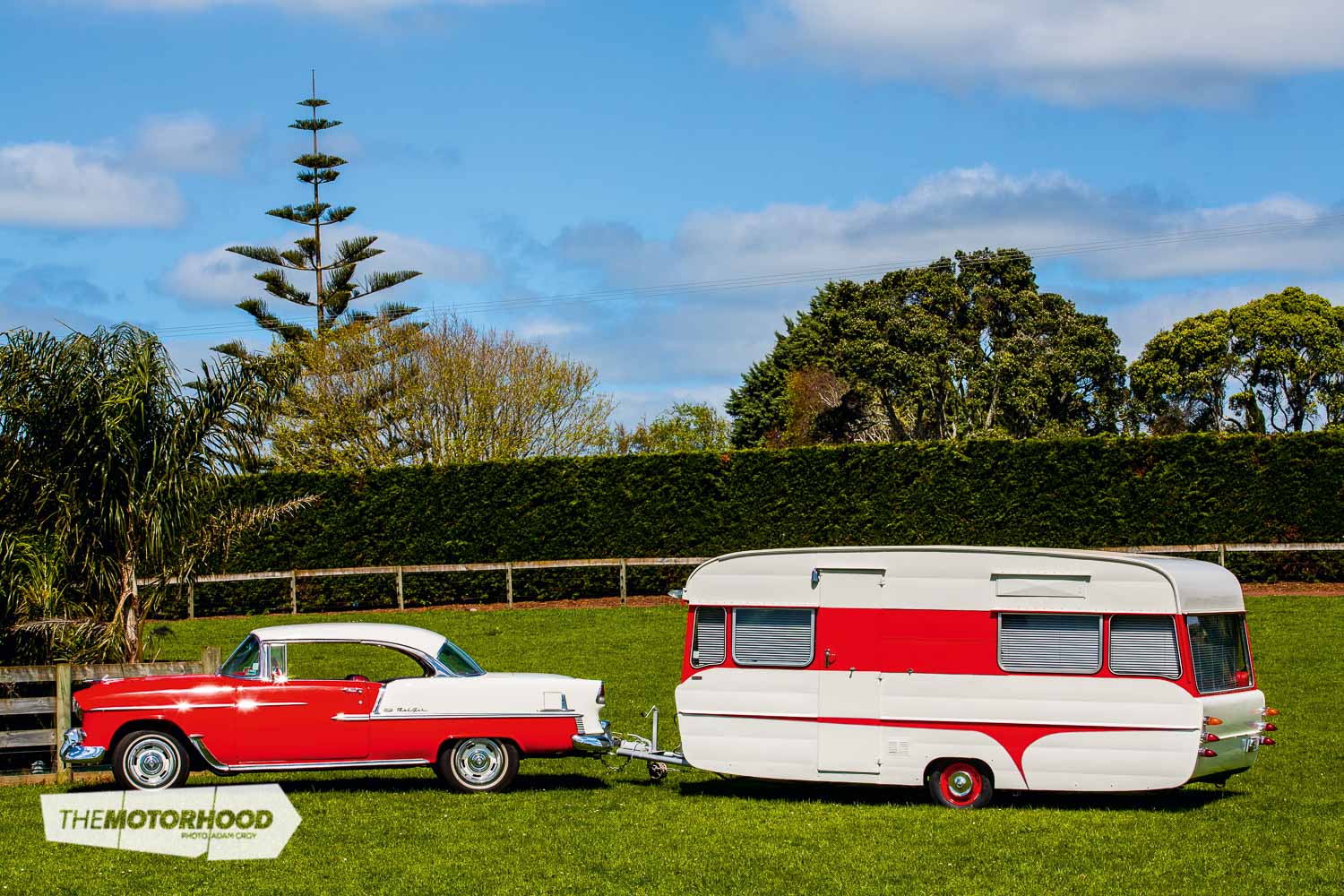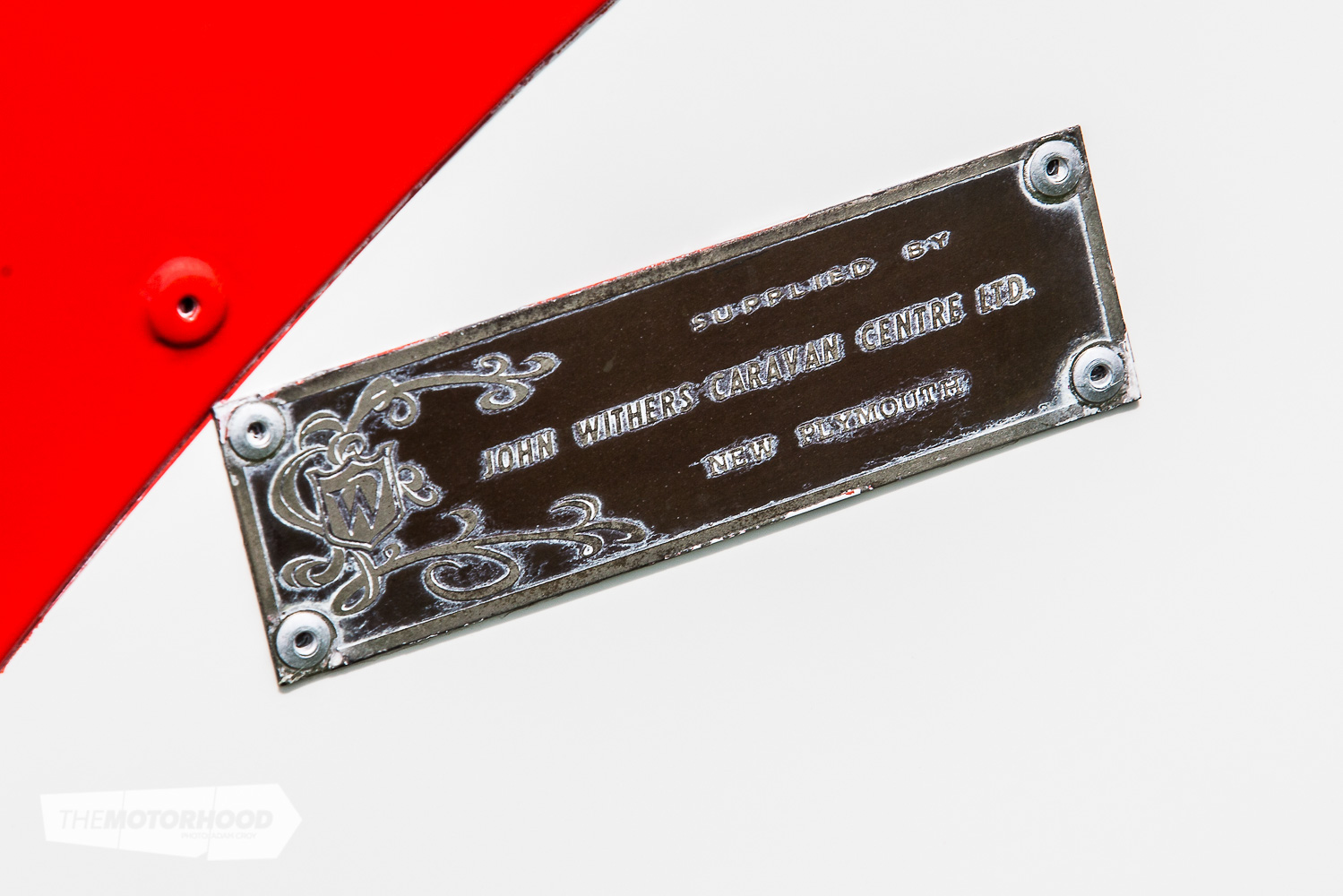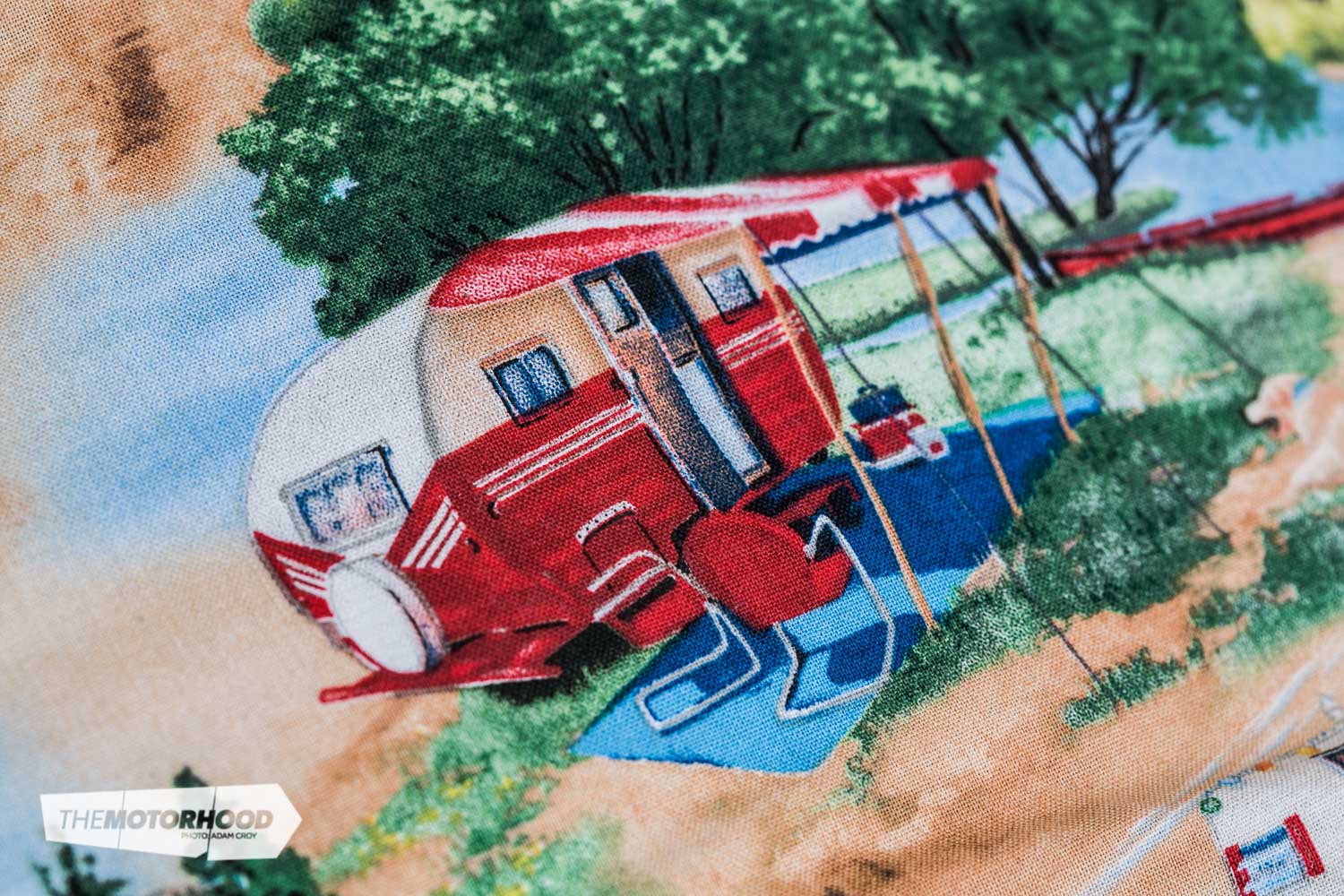
data-animation-override>
“Nothing says ‘Kiwi holiday’ like a caravan — and what better way to pull one than with a classic US cruiser?”
It’s summer — and all across the country there are queues of traffic crawling out of our cities and towns as holidaymakers head off to their favourite camping destinations, vehicles, and caravans packed to the gunwales. Along with mismatched plastic plates and cups, and the upturned tinny on the roof, this all used to be as much a part of our holiday experience as a drippy Jelly Tip, black iron sand, and a smoky BBQ. Let’s face it, whether we care to acknowledge the fact or not, the humble caravan is just as deeply entrenched in the Kiwi holiday psyche as the beachside bach, despite the fact that, for many, this way of life has been in rapid decline over the past few decades thanks to the growing trend towards motorhomes. Indeed, in recent times, the caravan versus motorhome issue has become hotly debated, partly fuelled by the recent revival and growing popularity of retro-style caravans — a trend that has seen a resurgence of beautifully-restored caravans from the ’50s, ’60s, and ’70s all over the country.
One such is Tony and Duane’s featured caravan, which they tow behind their equally impressive 1955 Chevrolet Bel Air Sport Coupe.

Instant decision
Tony discovered his Bel Air Sport Coupe around four years ago whilst trawling the internet. He already had a few projects on the go, as well as one or two extremely nice American cars tucked away in his extensive workshop, such as a 1969 Z28 Camaro and a beautifully restored ex–Dennis Marwood Camaro to name just two, plus a couple of aircraft. But he thought a tri-five Chevy would complement his growing collection of boys’ toys rather nicely.
So when Tony spotted this very desirable ’55 Bel Air he more or less made an instant decision to purchase the car, after confirming details with the Chevrolet’s Missouri-based owner. A subsequent independent inspection indicated the car was, indeed, a good one. As far as Tony was concerned, the Chevy ticked all the right boxes, including being a three-speed manual and having the 134-kilowatt (180-horsepower) Power Pack 265-cubic-inch (4343cc) V8 engine option, this being quite rare. In addition, the car was one of the extremely desirable — and, in my humble opinion, one of the best-looking — two-door sports coupé models.

Once back in New Zealand the Chevy was everything Tony had been led to believe in terms of its overall condition. This meant he was able to drive it regularly for about 12 months before deciding to give the bodywork a tidy up. By this stage Tony had started another business —Auto and Aero Restorations — operating from a large workshop facility at home that also included its own airstrip, to allow aircraft to be flown in for servicing.
As restoring and building classic cars and hot rods is also very much an integral part of Auto and Aero Restorations, Tony thought the ’55 Chevrolet would be ideal for promoting this part of the business.
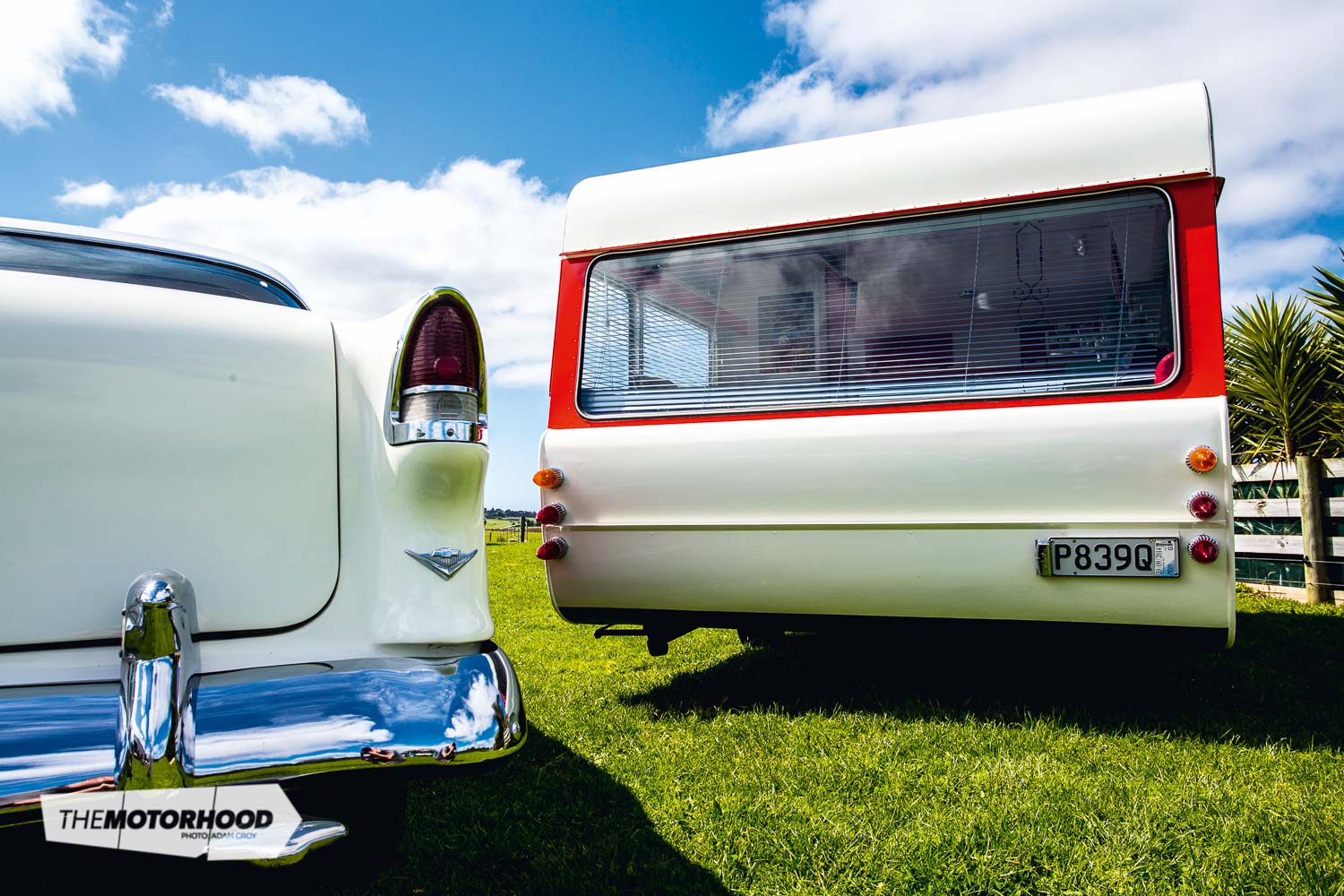
Refurbishing
With the engine removed and the body completely stripped back to bare metal, Tony was pleasantly surprised to find extremely straight, rust-free metal hiding beneath the worn-out paint scheme.
The plan was to keep the car completely original, and it was repainted in the original Gypsy Red and Ivory colour scheme. Tony’s wife, Duane, carefully polished all the stainless-steel trim, and the chrome bumpers needed little work to bring them up like new. The only parts required were smaller items such as door handles and rubbers to complete the job.
The interior remains exactly as Tony bought it, and while he suspects it may have been refurbished at some time during its life, on close inspection it’s difficult to tell and, to be perfectly honest, the car’s cabin could very well be original.

The Chev’s suspension was completely removed from the car when it first arrived in the country, and Tony replaced all the bushes, refurbished the brakes, and replaced the wheel cylinders. He also removed the differential and replaced the wheel bearings, as well as removing and reconditioning the fuel tank. The chassis was treated to a coat of paint before the original engine and gearbox were re-installed.
Tony knows everyone has their own beliefs and ideas regarding car restoration, and believes that if you want the enjoyment and satisfaction of stepping back in time and experiencing what it’s like to drive an old classic regardless of marque, then it’s best to keep the car as original as possible, which is what he and Duane enjoy most about this lovely old cruiser, especially when it’s towing their latest addition, a retro-style caravan.
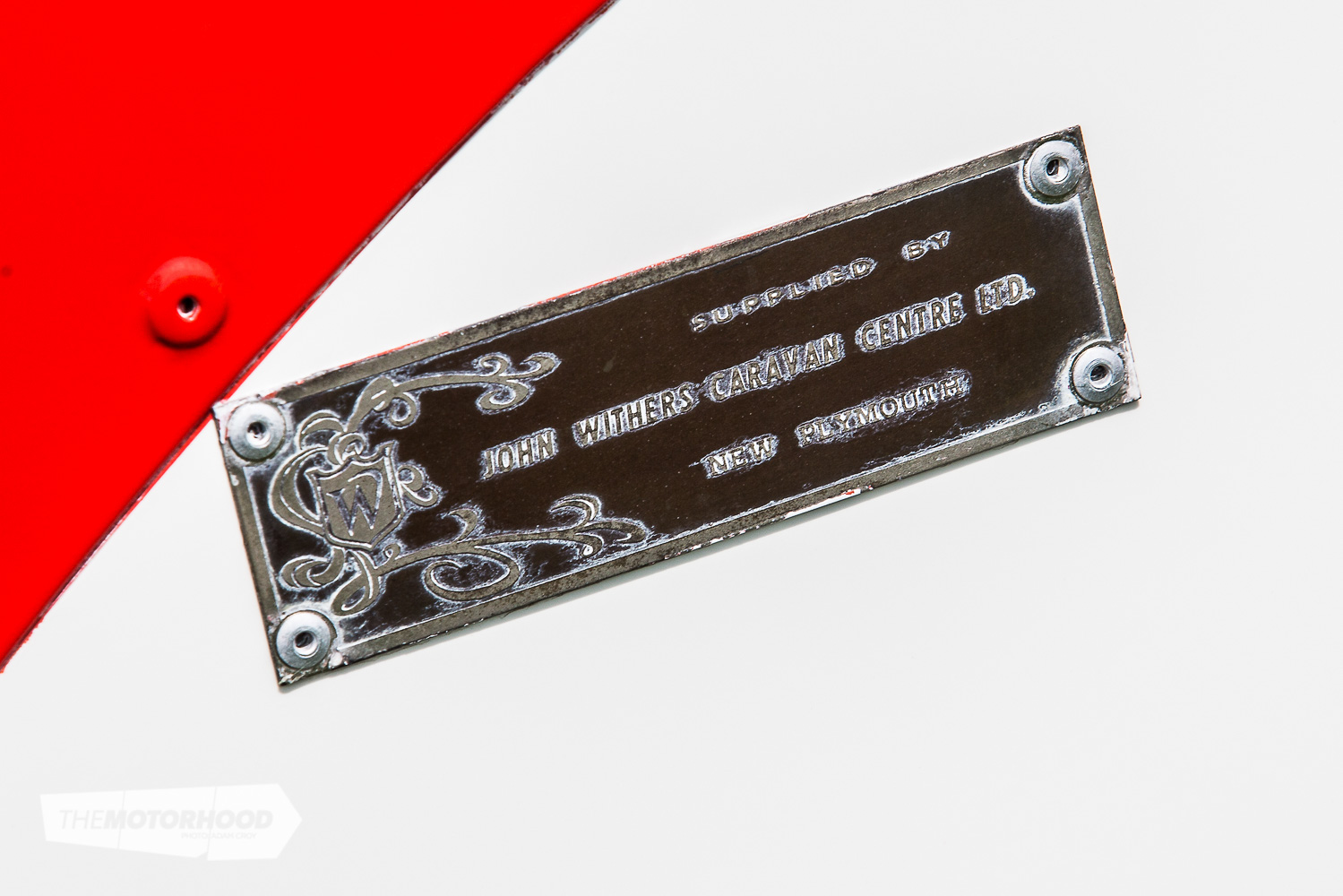
Classic caravan
Over the years, Tony admits that Duane has given him pretty much a free reign with regard to his passion for aircraft and classic cars and, more recently, has watched beautifully restored cars roll out of Tony’s workshop for satisfied customers. However, the time had come for Tony to repay her years of loyal support by building something she’d wanted for quite some time — a retro-style caravan they could enjoy together.
Duane’s passion for classic caravans began about 18 months ago when some of their friends decided it was time to park up their race cars and buy old caravans in an effort to watch motor racing, rather than participate in the on-track action. The idea was to further add to their relaxation time and, of course, create the opportunity to spend more time with family and friends. Indeed, Tony has not only restored two caravans for friends, he has also restored one for a customer, so it looks like he’s added another string to his business bow — not that he needs the extra work!

Milestone classic
Seldom does a new car arrive at just the right moment — to make history. One such standout in the 100 years of Chevrolet is the 1955 Chevrolet, and when it hit the showroom floors across the US, boasting new styling and a sizzling new Turbo-Fire V8 option, it was regarded as the most changed car in Chevrolet’s illustrious history and the most exciting car to ever wear the bow-tie badge since World War II. The ‘durable but dull’ image was gone and the longer, lower, and often two-toned 1955 Chevy exuded American optimism and was referred to as the ‘The Hot One’ thanks to the performance from its V8 and its record-breaking sales pace. Seldom had a mass-produced vehicle been so completely transformed in one year.
On November 23, 1954, the 50-millionth car produced by General Motors inside the US rolled off a Chevrolet assembly line in Flint, Michigan. The car taking the honours was none other than a 1955 Chevy Bel Air Sport Coupe two-door hardtop, just like the car featured in these pages. The subsequent problem for Chevrolet at the time, and a question frequently asked, was what would Chevy do for an encore? The answer was easy: the 1956 and 1957 Chevrolets. Over the years these popular cars became an icon for an entire generation, becoming some of the most desirable and collectable post-war cars of all.

It was Duane who began the search for a caravan, eventually finding a New Zealand–built 1973 4.2-metre (14-foot) Oxford caravan in the Coromandel town of Matarangi. The ’van was purchased, a major bonus being that Tony (a big lad) was actually able to stand up inside it without hitting his head on the roof! In fact the Oxford is something of a Kiwi legend, and has been part of many Kiwis’ summer holidays for generations. In 2011, leading motorhome and caravan manufacturer Motek unveiled its new range of iconic Oxford caravans with a modern twist on the original designs at the Covi Motorhome Caravan and Outdoor SuperShow in Auckland.

Oxford caravans
Back in the ’60s four caravan manufacturers — Oxford, Gipsy, Classic, and Pioneer — called the small Horowhenua town of Levin home. By the mid ’70s the town was booming, churning out no less than 8500 caravans in 1976 alone and, during peak production, earning the region of about $30M.
However, as the old cliché goes, all good things must come to an end, and so did the caravan industry thanks to the Muldoon-led government which, in 1979, imposed a 20-per-cent sales tax on new caravans and boats. The local caravan industry was, quite literally, wiped out overnight. Pioneer’s seven-month waiting list for new caravans evaporated, while Gipsy Caravans were able to secure just two sales from their once-full order book.
Unfortunately, the industry never fully recovered. At its peak, Oxford Caravans employed 163 staff and built 25 caravans a week for dealers around the country. Alas, the writing was on the wall as dealers struggled to sell the backlog of new caravans, causing irreparable cash-flow issues for Oxford Caravans and, in 1972, the company was taken over by local carmaker New Zealand Motor Corporation (NZMC). A problem remained, as NZMC was also expereiencing financial difficulties of its own and, within a year, had on-sold Oxford Caravans to Waikato-based company CI Munro, who built the Crusader range of caravans. CI Munro packed up the entire Oxford plant and moved it north to Otorohanga.
Despite all these trials and tribulations, in 2011 Motek (formerly CI Munroe) unveiled a new range of Oxford caravans, showcasing a modern twist to original’s iconic design and style.

Fitting out the Oxford
Tony and Duane’s caravan was typical of most from that era. It had been used as a spare bedroom for many years, and Tony’s initial thoughts were just to give the Oxford, which was basically in good shape, a quick tidy-up.
However, once it was back in his workshop and following a closer inspection, Tony decided to completely gut the caravan and rebuild it more exactly to Duane’s specifications. The chassis and underside were sandblasted and repainted, including the springs. All bearings, seals, and brakes were replaced with new items and new tyres were fitted.
Comfort was the key, and the first item to be installed was a super king–size bed. The next step was to search for retro-style interior fittings, and Duane discovered a company called ‘American Retro Furniture’ based on Auckland’s North Shore. Tony and Duane found the owner, Shelly May, to be extremely helpful, and she totally understood their requirements for the caravan project. The first items Tony and Duane purchased were the pedestals for the dining table and, after searching through Formica bench-top samples, they chose a style and colour that suited their taste. Once this decision had been made, Shelly imported the materials from the US.

The overall colour scheme for the caravan was a no-brainer given their gorgeous ’55 tow car was already painted Gypsy Red/Ivory; accordingly, the rebuilt Oxford received the same treatment.
In keeping with the retro theme, Papatoetoe Upholsterers applied its magic to the caravan’s interior upholstery, matching it exactly to the Chevy’s interior. Tony and Duane then turned to eBay in search of retro-style items such as the fridge, microwave oven, toaster, radio, hot-dog machine, and milkshake maker, to name just a few of the cool items to be found inside the Oxford. Duane also chose a few Route 66–style items for inside the caravan that really suit the style and theme, something she’s managed to achieve very nicely throughout.
Escape from stress
On a more practical note, Tony’s thoughts were that if they were sitting in a campground and the electricity went out for any reason, he still wanted a reliable power supply. So he installed a 110-Volt inverter as well as a 240-Volt inverter and a gas supply, making the caravan totally self-sufficient.

Final touches to the Oxford’s exterior included 1959 Cadillac tail lights and front clearance lights as well as period-style chromed Lucas number-plate lights.
Tony and Duane are delighted with the end result, and were preparing for their first weekend away to Miranda for a shakedown trip quite literally as our photographs were being taken.
Tony and Duane have reached a stage in life where they are more than happy to escape from the stress of their everyday business lives. As Tony says, “What can be better than driving a ’55 Chevy to a campsite with a matching 1950s-style caravan?” Out there, by the beach, they are enjoying the lifestyle they’ve earned — rock-’n’-roll music playing on the juke box, hot dogs made on their retro-style hot-dog maker — and simply enjoying themselves just as we all did back in the golden days of summer.
This article originally appeared in New Zealand Classic Car Issue No. 276. You can pick up a print copy or a digital copy of the magazine below:


